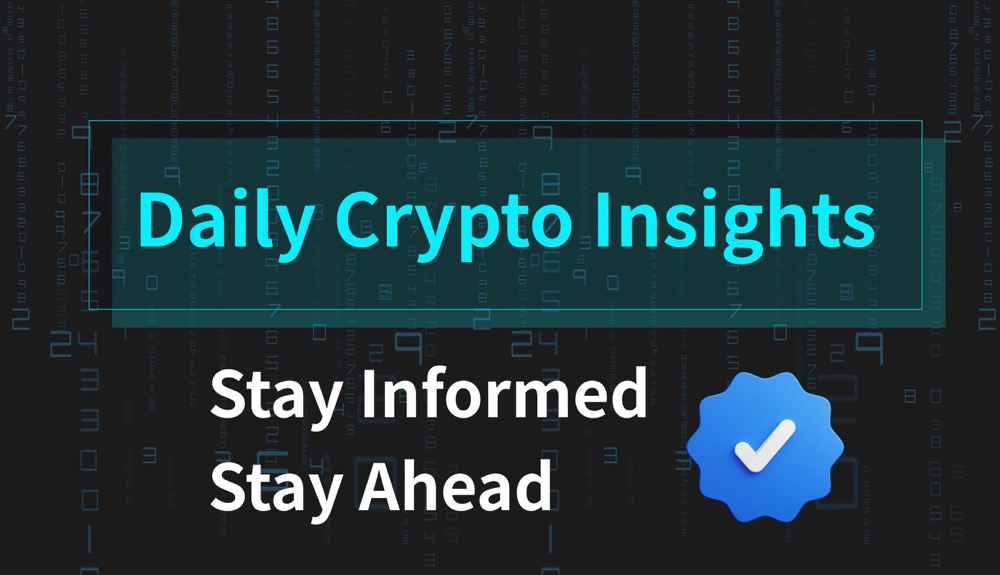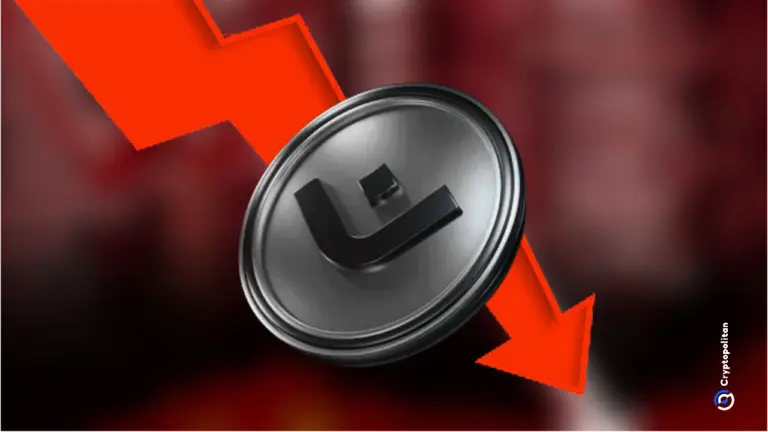Real-World Assets May Overtake Blockchain Sector Due To TradFi Interest

Traditional financial (TradFi) markets are showing increasing interest in the blockchain sector, which has become evident with the rise of tokenized real-world assets (RWAs).
According to blockchain analytics and research firm Messari, the RWA market has grown to $8 billion in total value locked (TVL) this year alone.
For context, tokenized RWAs use blockchain technology to bridge the gap between traditional finance and cryptocurrencies. This enables digital tokens on a blockchain network to define ownership rights of tangible assets.
TradFi Interest Drives Tokenized RWA Market
Industry experts expect RWA growth to continue accelerating due to TradFi’s interest.
Sergey Nazarov, Co-founder of Chainlink, recently mentioned on the Web3 Deep Dive podcast that tokenized RWAs will eventually surpass the total value of cryptocurrencies.
“Traditional ‘TradFi’ folks are very good at securitization, which is basically the packaging of something in a financial product, and real-world assets are a nice word for securitization of various assets,” Nazarov said. “As TradFi communities come into the crypto blockchain world, it’s very natural that they will securitize assets.”
Simon Barnby, Chief Marketing Officer of Archax, a UK-based regulated crypto exchange, told Cryptonews that the cryptocurrency sector’s total market size is currently less than that of Apple. Given this, the potential for tokenized RWAs is huge.
“Archax has calculated the total size of all financial market and instruments to be $1.7 quadrillion, so the potential scope for tokenized RWAs is immense – and that doesn’t include the tokenization of new RWA types, such as music rights, royalties, art, etc,” Barnby said.
Tokenization is Revolutionizing TradFi Assets
While tokenized RWAs are not a new concept, the crypto industry has recently begun seeing an influx of RWA s on blockchain networks.
Hedera President Charles Adkins told Cryptonews that this is because tokenization is a completely new form of asset ownership, trading, and management within TradFi.
“Benefits of tokenization include enhanced liquidity, transparency, and efficiency,” Adkins said. “Tokenized real-world assets such as stocks, bonds, and commodities represent a significant advancement for the Web3 sector.”
To put this in perspective, Adkins explained that UK global investment company and asset manager Arbdn has begun utilizing Hedera’s tokenization service. According to Adkins, Arbdn has tokenized a portion of its $20 billion-plus money market fund (MMF).
MMFs are low-risk investment vehicles that offer investors a return that increases with interest rates. Adkins noted that when MMFs release cash to investors, the cash must be reimbursed to achieve the equivalent annual percentage return. Yet, this can place an administrative burden on investors. Tokenizing these assets can help solve this pain point.
“By tokenizing MMFs on Hedera, Arbdn enables same-day payments and automated income reinvestment, significantly enhancing liquidity and operational efficiency in the process,” Adkins remarked.
Other Tokenized RWA Use Cases
Swiss crypto investment firm Bitcoin Suisse recently issued a tokenized bond on Obligate, an on-chain capital markets platform built on the Polygon blockchain. Bitcoin Suisse has CHF 5 billion ($5.5 billion) in assets under custody.
Jesse Knutson, Head of Operations of Bitfinex Securities, told Cryptonews that using blockchain technology allows issuers and investors to interact more directly than they can in legacy capital markets.
“In TradFi, it’s often the case that third-party intermediaries are involved in managing and arranging transactions,” said Knutson. “With tokenized assets, Bitfinex Securities provides investors real-time settlement, trading, and a low-friction user experience.”
Knutson added that Bitfinex Securities currently has a tokenized debt offering to construct a Hilton-brande d hotel at the El Salvador International Airport.
“Earlier this year we issued a similar tokenized bond structure for Mikro Kapital, a microfinance investment group,” Knutson said. “We have a healthy pipeline of issues coming to market. Tokenization for both issuers and investors is important because it facilitates a low-friction user experience and an increased degree of control over assets at a lower cost basis for issuers.”
Blockchain Technology Has Matured
In addition to the RWA narrative, blockchain has matured, making it easier for TradFi firms to use the technology.
According to Nazarov, it has become much easier to create a blockchain network, tokenize assets, and inject data into a token using Chainlink.
“RWA assets are connected to real world things, so they need to have that data fed into them on-chain,” Nazarov said. “Five years ago there wasn’t a reliable way to put data into blockchains for RWAs.”
The rise of Bitcoin layer-2 networks and sidechains has also been helpful for tokenized RWA use cases.
Knutson pointed out that technologies like Blockstream’s Liquid Network – a sidechain of Bitcoin – enable investors to withdraw tokenized assets, transfer them to other platforms, or trade them peer-to-peer within a white-listed ecosystem.
Regulatory Challenges May Hamper Adoption
While tokenized RWAs are gaining traction, regulatory challenges may hamper adoption.
Anais Ofranc, Founder and CEO of DLT-focused technology consulting firm QualitaX, told Crypto news that existing token standards such as ERC-20, ERC-721, and ERC-1155 do not sufficiently align with the regulatory requirements of RWAs, which have been problematic.
“Having robust, widely adopted token standards is crucial for the growth of tokenized RWAs because it enables interoperability, tooling, and network effects,” Ofranc said. “It also provides greater legal and regulatory certainty as technical standards emerge to encode compliance requirements.”
Token standards around RWAs will also enhance credibility and adoption. Ofranc noted that standards make RWA tokens more trusted and accessible to a wider user base.
“It also makes it easier to integrate with wallets, exchanges, lending protocols, etc.,” she said. “Standards ensure basic compatibility.”
Fortunately, Ofranc shared that standards such as the ERC-3643 or ERC-1400 have since appeared. She explained that ERC-3643 emphasizes compliance through embedded transfer rules in tokens and identity verification using existing standards.
“This could enable use for regulated securities applications,” Ofranc noted. “It supports a wide range of RWA tokenization, including securities, commodities, e-money, and loyalty programs. It also aims to facilitate increased asset liquidity and reduce transaction fees through automated on-chain settlement.”
In addition, Ofranc explained that ERC-1400 is specifically designed for tokenizing securities.
“ERC-1400 accommodates multiple asset classes and partitions, allowing for the representation of different share classes within a single token structure,” she said. “ERC-1400 enables compliance through flexible on-chain and off-chain transfer restrictions.”
Technical Challenges Remain
Regulations aside, technical issues may also restrict adoption.
Colin Cunningham, Head of Tokenization and Alliances at Chainlink Labs, told Cryptonews that the biggest challenge facing the global adoption of tokenized assets is the fragmentation of the multi-chain blockchain ecosystem. This, combined with the complexity of integrating with different blockchains, remains problematic for RWA adoption.
Cunningham shared that Chainlink’s CCIP interoperability protocol could solve these challenges.
“Chainlink CCIP addresses both these challenges by providing secure interoperability between any public or private chain and serving as a blockchain abstraction layer for institutions seeking to participate in the on-chain economy,” he said.
On June 12, Chainlink’s CCIP protocol went live on the Gnosis network , which consists of projects focused on digitizing payments infrastructure to make decentralized finance (DeFi) accessible.
While Chainlink’s CCIP will enable a number of benefits for Gnosis users, the protocol will allow Gnosis users to interact and swap value across blockchains.
Progress Being Made To Enable Mass Adoption
Advancements like Chainlink’s CCIP and emerging standards highlight some of the progress being made to enable mass adoption for tokenized RWAs.
Given this, industry experts are optimistic about the potential of tokenized RWAs.
“Tokenization offers a long list of benefits to issuers and investors. I think it’s precisely these benefits that seem to be increasingly capturing the attention of mainstream institutional investors, like Blackrock,” Knutson remarked. “At this point, I think it’s a fairly consensus view that this is the direction markets are likely to evolve toward.”
Disclaimer: The content of this article solely reflects the author's opinion and does not represent the platform in any capacity. This article is not intended to serve as a reference for making investment decisions.
You may also like

Research Report | In-Depth Analysis of WalletConnect & WCT Market Valuation

Research Report | In-Depth Analysis of the Wayfinder Project & $PROMPT Market Valuation

MANTRA (OM) token losses 98% of value, wipes $6 billion from market cap in minutes
Share link:In this post: MANTRA (OM) dropped from $6 to $0.57 in under an hour, losing 98% of its value. Over $6 billion in market cap was wiped out in minutes during the crash. Traders on X blamed an alleged “Kabal team” for a massive insider sell-off.
